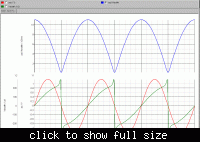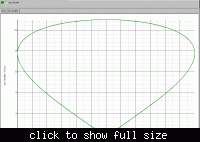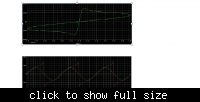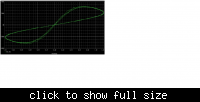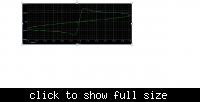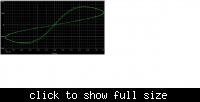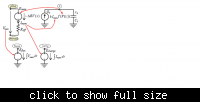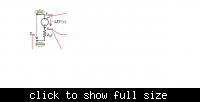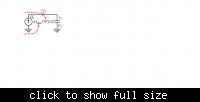Memristor
Newbie level 6
Hi,
i'm trying to do a simulation pspice of memristor,but when i run simulaion i don't obtain the pinched hysteresis loop of memristor.Can you help me? This is the pspice netlist .... are there mistakes?
* Ron, Roff - Resistance in ON / OFF States
* Rinit - Resistance at T=0
* D - Width of the thin film
* uv - Migration coefficient
* p - Parameter of the WINDOW-function
* for modeling nonlinear boundary conditions
* x - W/D Ratio, W is the actual width
* of the doped area (from 0 to D)
*
.SUBCKT memristor Plus Minus PARAMS:
+ Ron=100 Roff=16K Rinit=11K D=10N uv=10F p=10
* DIFFERENTIAL EQUATION MODELING *
Gx 0 x value={ I(Emem)*uv*Ron/D^2*f(V(x),p)}
Cx x 0 1 IC={(Roff-Rinit)/(Roff-Ron)}
Raux x 0 1T
* RESISTIVE PORT OF THE MEMRISTOR *
Emem plus aux value={-I(Emem)*V(x)*(Roff-Ron)}
Roff aux minus {Roff}
*Flux computation*
Eflux flux 0 value={SDT(V(plus,minus))}
*Charge computation*
Echarge charge 0 value={SDT(I(Emem))}
* WINDOW FUNCTIONS
* FOR NONLINEAR DRIFT MODELING *
*window function, according to Joglekar
.func f(x,p)={1-(2*x-1)^(2*p)}
*proposed window function
;.func f(x,i,p)={1-(x-stp(-i))^(2*p)}
.ENDS memristor
Xmemrist aa 0 memristor
Vtest aa 0 SIN(0 1.2V 1 0 0 0)
.tran 0 3s 0 3m skipbp
.probe
.end
After "Run Test" i do:
Trace---->Add New Trace---->V(aa)-I(Vtest).....is correct?
Thanks,
Memristor
i'm trying to do a simulation pspice of memristor,but when i run simulaion i don't obtain the pinched hysteresis loop of memristor.Can you help me? This is the pspice netlist .... are there mistakes?
* Ron, Roff - Resistance in ON / OFF States
* Rinit - Resistance at T=0
* D - Width of the thin film
* uv - Migration coefficient
* p - Parameter of the WINDOW-function
* for modeling nonlinear boundary conditions
* x - W/D Ratio, W is the actual width
* of the doped area (from 0 to D)
*
.SUBCKT memristor Plus Minus PARAMS:
+ Ron=100 Roff=16K Rinit=11K D=10N uv=10F p=10
* DIFFERENTIAL EQUATION MODELING *
Gx 0 x value={ I(Emem)*uv*Ron/D^2*f(V(x),p)}
Cx x 0 1 IC={(Roff-Rinit)/(Roff-Ron)}
Raux x 0 1T
* RESISTIVE PORT OF THE MEMRISTOR *
Emem plus aux value={-I(Emem)*V(x)*(Roff-Ron)}
Roff aux minus {Roff}
*Flux computation*
Eflux flux 0 value={SDT(V(plus,minus))}
*Charge computation*
Echarge charge 0 value={SDT(I(Emem))}
* WINDOW FUNCTIONS
* FOR NONLINEAR DRIFT MODELING *
*window function, according to Joglekar
.func f(x,p)={1-(2*x-1)^(2*p)}
*proposed window function
;.func f(x,i,p)={1-(x-stp(-i))^(2*p)}
.ENDS memristor
Xmemrist aa 0 memristor
Vtest aa 0 SIN(0 1.2V 1 0 0 0)
.tran 0 3s 0 3m skipbp
.probe
.end
After "Run Test" i do:
Trace---->Add New Trace---->V(aa)-I(Vtest).....is correct?
Thanks,
Memristor
